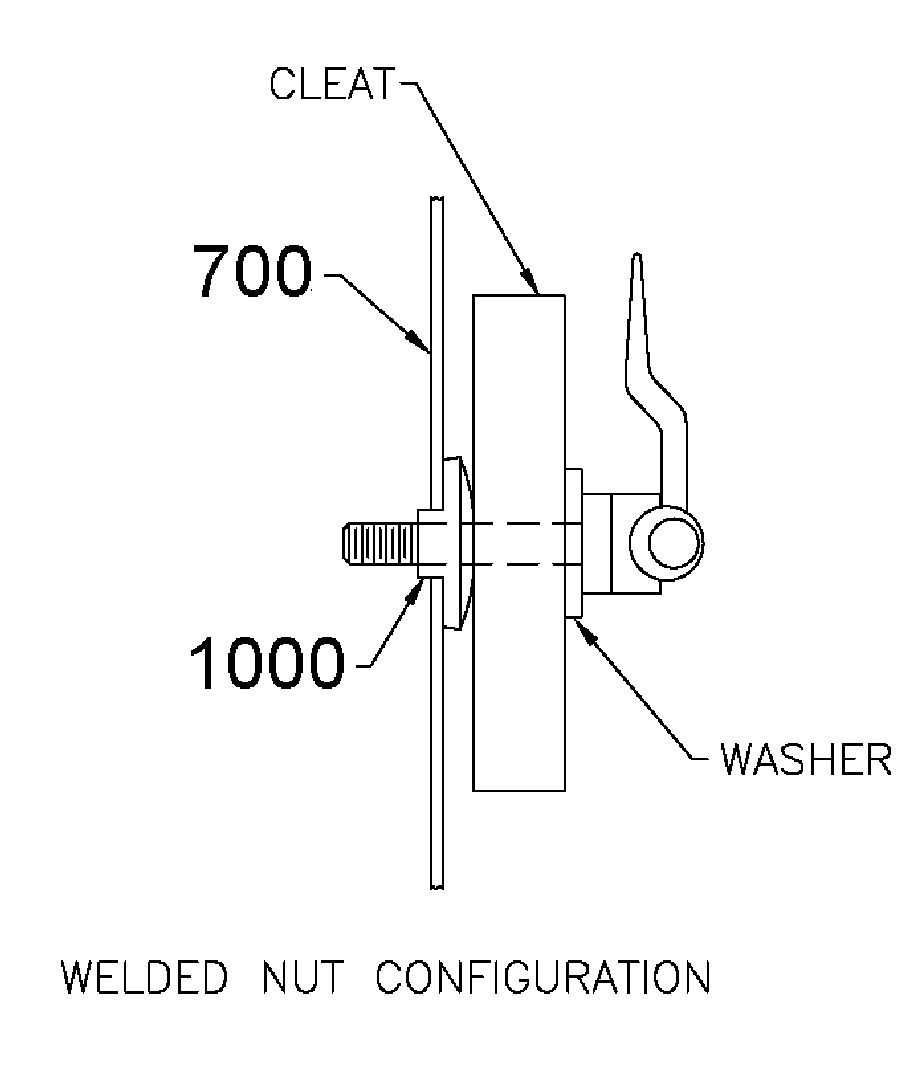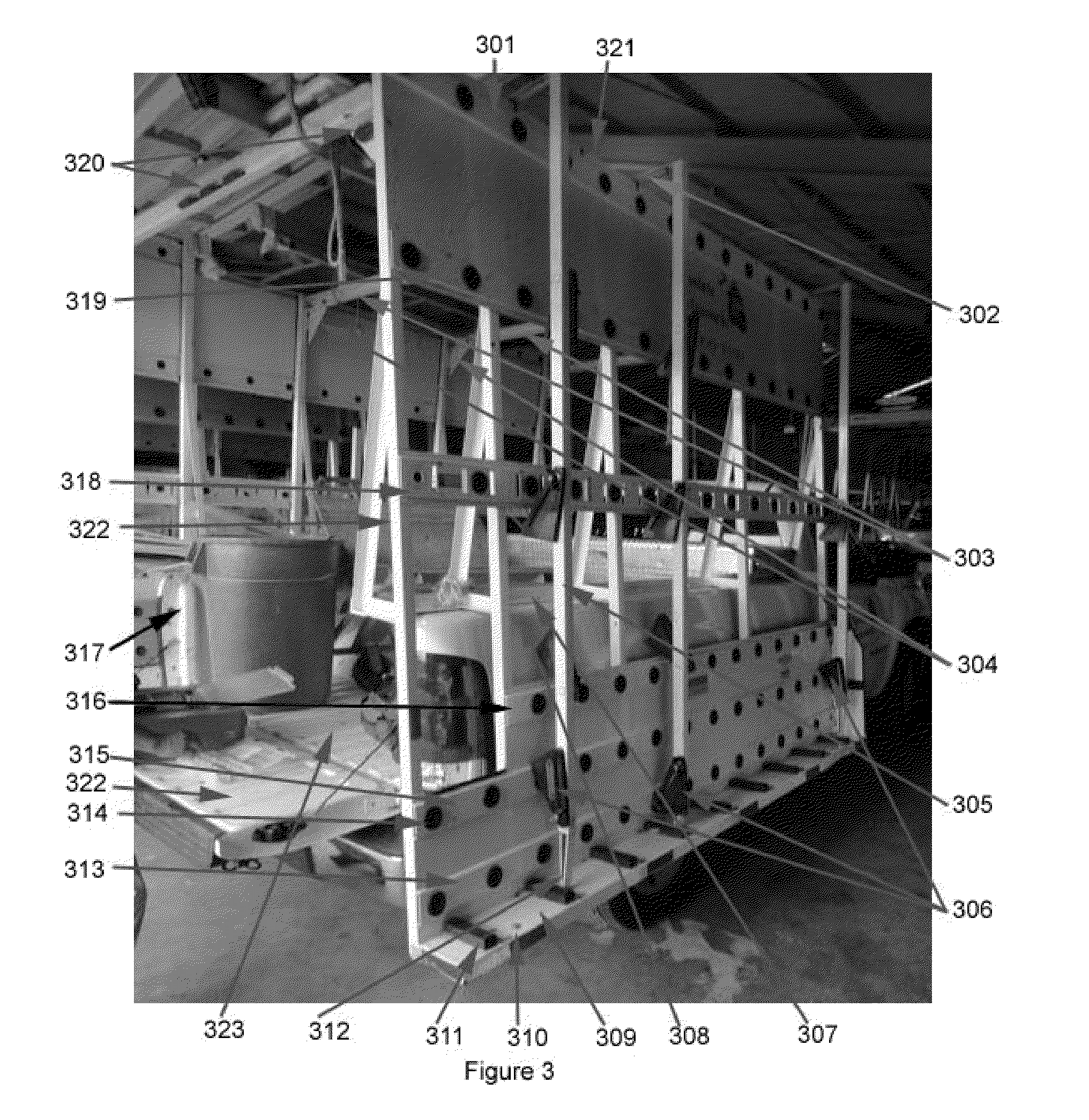Two-stage clamp for glass transport
a clamping mechanism and glass technology, applied in the field of clamps, can solve the problems of loss of nuts, bolts and washers of such clamping mechanisms, inconsistent uniformity of tightening, and difficulty for a glove wearer to have the dexterity required to quickly hand-tighten such mechanisms, etc., to facilitate one-time adjustment of the mechanism and facilitate operation.
- Summary
- Abstract
- Description
- Claims
- Application Information
AI Technical Summary
Benefits of technology
Problems solved by technology
Method used
Image
Examples
Embodiment Construction
[0029]The term “glass rack” as used in this document shall be construed to mean a rack suitable for transporting glass or other sheet material, or stone slabs or the like. FIG. 3 is a photo of a typical modern light-duty glass delivery truck with a glass rack installed. Mounting rail 307 bolts to truck bed wall rail 308 and supports the weight of the glass rack on truck bed wall rail 308. The plane in which the interface between mounting rail 307 meets truck bed wall rail 308 shall be referred to in this document as the “primary plane of attachment”.
[0030]Glass or other sheet material which is loaded on the rack rests edge-wise on rubber pads 311 and the majority of the weight of the glass is transferred to lower support rail 309 through pads 311. A small fraction of the weight of glass or other sheet material loaded on the rack rests on surface pads 314 (also sometimes called “buttons”), which are mounted along first (lower) face rail 313, second face rail 315, third face rail 316,...
PUM
 Login to View More
Login to View More Abstract
Description
Claims
Application Information
 Login to View More
Login to View More - R&D
- Intellectual Property
- Life Sciences
- Materials
- Tech Scout
- Unparalleled Data Quality
- Higher Quality Content
- 60% Fewer Hallucinations
Browse by: Latest US Patents, China's latest patents, Technical Efficacy Thesaurus, Application Domain, Technology Topic, Popular Technical Reports.
© 2025 PatSnap. All rights reserved.Legal|Privacy policy|Modern Slavery Act Transparency Statement|Sitemap|About US| Contact US: help@patsnap.com



